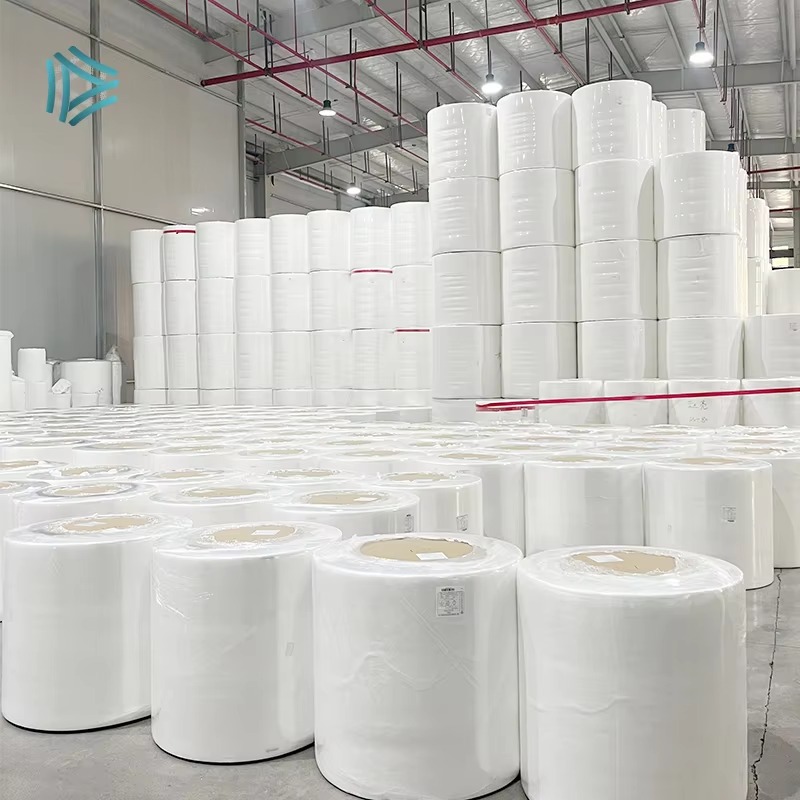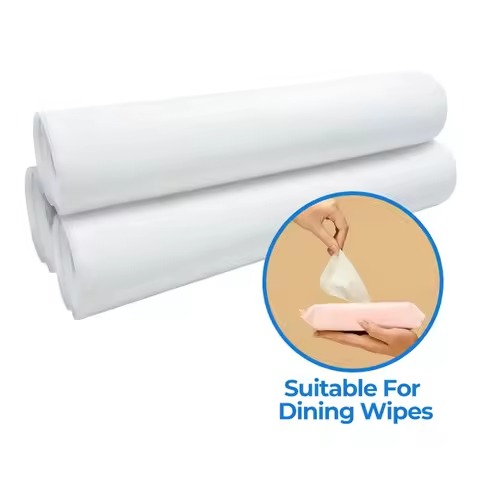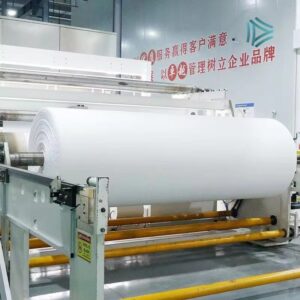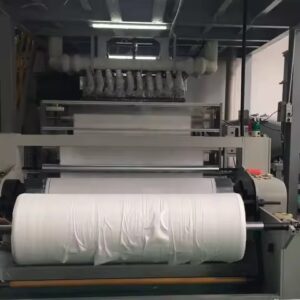Applications of Spunlace Nonwoven Fabric Across Industries
Introduction
Modern industries are increasingly looking for materials that are versatile, cost-effective, durable, and eco-friendly. Traditional woven textiles, while strong and familiar, often fail to meet the speed, affordability, and sustainability demands of today’s world. This is where Spunlace Nonwoven Fabric stands out.
Created through hydroentanglement technology, spunlace combines softness, strength, and biodegradability in one material. Its ability to absorb moisture, resist tearing, and mimic the texture of natural fabrics makes it a multi-industry favorite. From healthcare and cosmetics to agriculture and automotive manufacturing, spunlace nonwovens have become indispensable.
This article explores the wide range of applications of spunlace nonwoven fabric across industries, demonstrating why it has become one of the most dynamic textiles of the 21st century.
1. Healthcare & Medical Applications
Healthcare is one of the largest markets for spunlace nonwoven fabric due to its strict hygiene requirements and demand for single-use, disposable products.
1.1 Surgical Gowns and Drapes
Hospitals rely heavily on sterile barriers. Spunlace fabrics, with their softness, tensile strength, and breathability, are widely used to make surgical gowns and drapes. These garments not only protect patients and staff from contamination but also provide comfort during long procedures.
1.2 Medical Masks and Protective Clothing
During the COVID-19 pandemic, spunlace became vital for manufacturing medical masks, respirators, and protective clothing. Its filtration efficiency and breathability make it suitable for prolonged wear while preventing bacterial and viral transmission.
1.3 Wound Dressings and Bandages
Spunlace’s high absorbency and softness make it ideal for wound dressings, gauze pads, and hemostatic materials. It absorbs exudates quickly while protecting the wound from infection, ensuring faster healing.
1.4 Sanitary and Nursing Pads
Disposable nursing pads, sanitary napkins, and incontinence products often use spunlace as the top sheet because it is skin-friendly, absorbent, and breathable. This enhances user comfort and reduces irritation during prolonged contact.\
1.5 Disinfectant Wipes
From hospitals to homes, medical-grade disinfectant wipes are a critical hygiene tool. Spunlace ensures that wipes are durable, lint-free, and capable of holding disinfectant solutions without breaking apart.
2. Personal Care & Cosmetic Applications
The personal care industry has seen exponential growth in demand for spunlace fabrics due to their softness, moisture absorption, and biodegradability.
2.1 Facial Masks & Cosmetic Pads
Facial sheet masks rely on spunlace fabric to deliver active skincare ingredients effectively. Similarly, cotton pads and wipes for makeup removal are typically made from spunlace due to their softness and liquid retention capacity.
2.2 Baby Wipes and Diapers
Parents prefer baby products that are gentle, safe, and effective. Spunlace is widely used in baby wipes, diapers, and cleansing tissues, ensuring both hygiene and comfort.
2.3 Feminine Hygiene Products
Spunlace nonwovens are increasingly used in feminine hygiene products such as sanitary napkins, pantyliners, and intimate wipes. Their skin-friendly softness and moisture absorption make them a reliable choice for sensitive use.
3. Household & Industrial Cleaning
Spunlace fabrics are widely recognized in cleaning applications because they combine high absorbency with durability.
3.1 Kitchen & Household Wipes
Kitchen wipes made from spunlace can efficiently remove oil and stains while remaining tear-resistant even when wet. Unlike paper towels, they can often be rinsed and reused.
3.2 Industrial Cleaning Cloths
In manufacturing environments, spunlace is used for oil-absorbent wipes, lint-free cloths, and heavy-duty cleaning rags. These fabrics can withstand solvents and repeated use, making them more economical than disposable paper-based alternatives.
3.3 HACCP-Compliant Cleaning Systems
In food preparation and healthcare settings, spunlace cloths are available in color-coded variants to prevent cross-contamination. This ensures compliance with hygiene standards while improving safety.
4. Automotive Industry
The automotive sector uses spunlace nonwovens to enhance comfort, safety, and durability in vehicle interiors.
Seat Covers & Upholstery Linings – Soft, breathable layers that improve comfort.
Carpets & Trunk Liners – Lightweight yet durable spunlace adds insulation and strength.
Sound Absorption Panels – The porous structure of spunlace aids in reducing noise inside vehicles.
Air & Cabin Filters – Spunlace provides effective filtration while allowing airflow.
Because spunlace is resistant to mold and mildew, it performs well in humid automotive environments.
5. Agriculture & Horticulture
In farming, spunlace fabrics serve as protective and environmental regulators.
Crop Covers – Maintain soil temperature and moisture while protecting plants from pests.
Weed Control Sheets – Block sunlight to suppress weed growth without chemicals.
Soil Protection Layers – Prevent erosion and preserve soil fertility.
These applications help farmers increase yields while reducing pesticide and fertilizer usage, supporting sustainable agriculture.
6. Clothing & Fashion
While not as dominant in fashion as woven fabrics, spunlace plays an important role in functional apparel.
Sportswear & Underwear – For lightweight, breathable layers that wick moisture.
Disposable Apparel – Used in protective clothing for cleanrooms, beauty salons, and workshops.
Eco-Friendly Fashion Accessories – Emerging designers are experimenting with spunlace for sustainable bags, hats, and novelty items.
Its softness and versatility make it an attractive material for niche fashion segments.
7. Packaging & Eco-Friendly Alternatives
With rising restrictions on single-use plastics, spunlace is increasingly used in packaging and shopping bags.
Reusable Shopping Bags – Stronger and more eco-friendly than plastic bags.
Food Packaging – Breathable wraps that keep produce fresh.
Courier & Delivery Bags – Lightweight, tear-resistant spunlace replaces conventional plastic packaging.
As sustainability regulations tighten, spunlace is expected to capture more of the packaging market.
8. Filtration Applications
Spunlace’s unique porous yet stable structure makes it effective for both air and liquid filtration.
Air Filters – Used in HVAC systems, cars, and masks.
Water Filters – For industrial and household purification.
Medical Filtration – In hospital ventilators and respirators.
Its balance of strength, permeability, and particle retention gives spunlace an edge over other filtration media.
9. Emerging Applications
As research continues, new applications for spunlace fabrics are emerging:
Construction Materials – Waterproofing membranes, insulation layers, and acoustic panels.
Smart Textiles – Integration with sensors and functional coatings for IoT-enabled fabrics.
Eco-Friendly Composites – Blends with bio-based fibers for sustainable industrial materials.
These innovations signal a future where spunlace will be at the heart of next-generation fabric solutions. Emerging fields are also benefiting from material innovation and future trends in spunlace
Conclusion
The versatility of Spunlace Nonwoven Fabric is unmatched in the textile world. Its ability to serve critical needs in healthcare, hygiene, personal care, cleaning, agriculture, automotive, packaging, and fashion showcases its adaptability and long-term value.
Driven by performance (softness, absorbency, strength) and environmental responsibility (biodegradability, recyclability, plastic alternatives), spunlace has become a material of choice across industries.
As technology advances and global sustainability regulations tighten, the demand for spunlace nonwovens will only increase. Whether in a hospital operating room, a family kitchen, a car interior, or a farm field, spunlace fabric is quietly shaping a cleaner, safer, and more sustainable future.
“If you’re sourcing spunlace for your business, see our complete guide to fabric selection and quality control






